At long last, Shazam! Fury of the Gods has struck theaters with another exciting adventure following Billy Batson and his super-powerful foster family. As with many other comic book movies, there are plenty of Easter eggs laid throughout this superhero blockbuster that reference previous comics, films, and TV shows.
Now that the film has finally made its worldwide premiere, here’s a guide to all the hidden and extra details found in Shazam! Fury of the Gods.
The doctor’s toys

In Billy’s first scene in the film, he takes part in a therapy session with his doctor (pediatrician, actually). In his office, the audience finds a kids’ table with the cursed Annabelle doll that appears in The Conjuring Universe. This is clearly a reference to director David F. Sandberg’s previous film featuring said doll, Annabelle: Creation.
However, there are also plush dolls of heroes like Wonder Woman, Batman, Robin, and Green Lantern. There’s also a painting of Starro on the wall, which is strange since he killed and brainwashed countless people in The Suicide Squad.
Lotta Losten
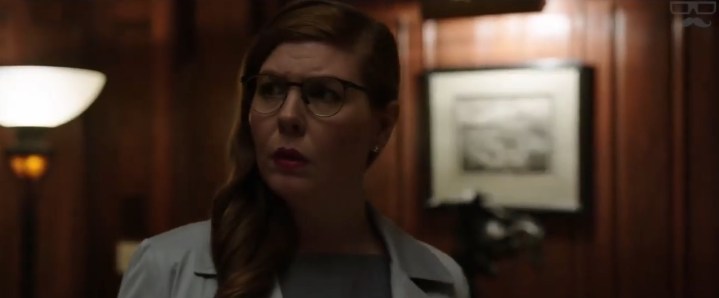
Director David F. Sandberg’s wife Lotta Losten makes a brief cameo in this movie as a woman whom Shazam saves from falling off a bridge. Loste is also known for playing Dr. Lynn, who disintegrates after touching a magic door in the first Shazam! film, as well as the protagonist in many of Sandberg’s short horror films. At this point, it’s pretty clear Sandberg loves putting his wife in scary situations on camera.
The burning violin

One of the most bizarre artifacts found in the Rock of Eternity is a violin that’s always burning. This mystical relic reappears in the sequel and is the subject of many jokes, and is even used as a distraction to trick the Daughters of Atlas.
Some comic book fans may know this is an obscure reference to Nero’s fiddle from Captain Marvel Adventures #64, which shows the villain Oggar enchant the artifact to make it release fire, nearly turning New York City to ashes.
Pedro’s book report
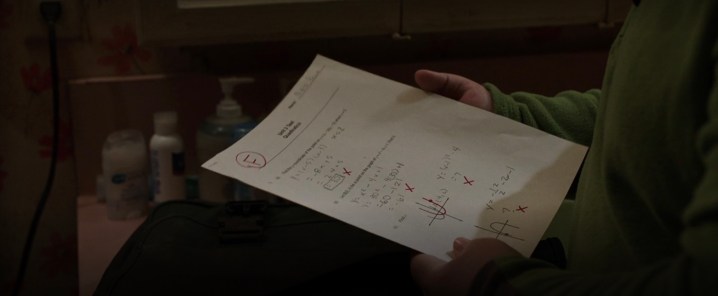
In the first film, Billy’s foster brother Pedro is seen throwing out a test marked with a failing grade, indicating that he is having trouble in school. Though this subplot isn’t mentioned much after that, the sequel does call back to it with the revelation that the Shazam Family’s sentient pen Steve has been secretly writing Pedro’s book reports for him.
Shazam’s real name
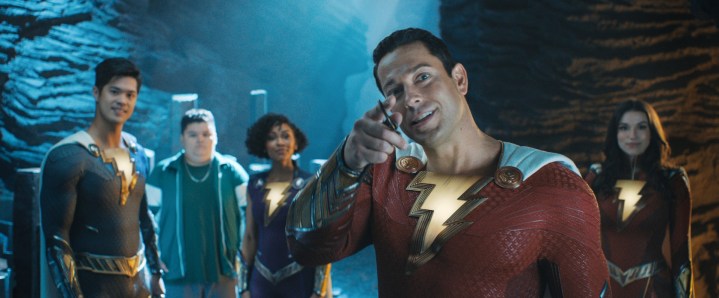
Even in his second film, Billy still can’t figure out the name of his superhero persona. Though he and his team are dubbed the “Philadelphia Fiascos” by the local news, one bystander lovingly refers to Billy as “Captain Marvel” later in the film.
Many fans know that this was the hero’s original moniker in the comics before facing a trademark battle over a certain character of the same name in Marvel Comics. Fun fact: the bystander who calls Shazam “Captain Marvel” is played by TV’s Michael Gray, who played Billy Batson on The Shazam!/Isis Hour.
The Fast and the Furious
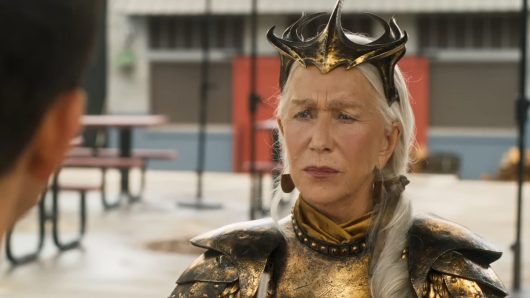
In the scene where Billy meets with Hespera, Billy argues that he has the upper hand in their divine conflict because he has his family supporting him, all while mentioning that he’s watched all the Fast of the Furious films.
While it’s common knowledge that this series of action blockbusters emphasizes family to the point of widespread parody, this bit of dialogue may also be a tongue-in-cheek reference to Mirren’s role in the franchise as Magdalene Shaw.
The cyclops
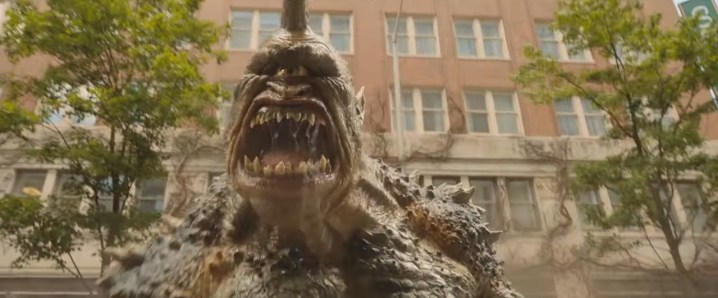
This superhero film pays homage to classic cinema with the appearance of the mythical cyclops, who is birthed from the Tree of Life when Kalypso plants it in Philadelphia. This creature’s design strongly resembles that of the cyclops seen in The 7th Voyage of Sinbad which was designed by Ray Harryhausen, whose work in stop-motion animation set the stage for future CGI blockbusters like Fury of the Gods.
The man in black

During the film’s climactic third act, Billy’s red super suit becomes so burnt that it is rendered almost completely black. This costume design likely references Billy’s predecessor, Black Adam, who made his DCEU debut not long ago in his film of the same name.
The fact that Billy now resembles him as he battles Kalypso seems to complete the former’s complete transformation as the legendary Champion of Shazam, albeit one with a much purer heart.
The Justice Society

The film’s mid-credits scene features the surprise return of Emilia Harcourt and John Economos. The duo is seen inviting Shazam to join the Justice Society of America, who introduced themselves to the DCEU in Black Adam (perhaps this is another setup for Shazam to face his antiheroic counterpart). Shazam quickly accepted the offer, but only because he thought they meant the Justice League.
The hero then goes on a long rant questioning why both teams have similar names, and he throws some suggestions for different names using an online thesaurus. This ends with Shazam suggesting “The Avengers Society,” which he likes the most. Gee, wonder why.



